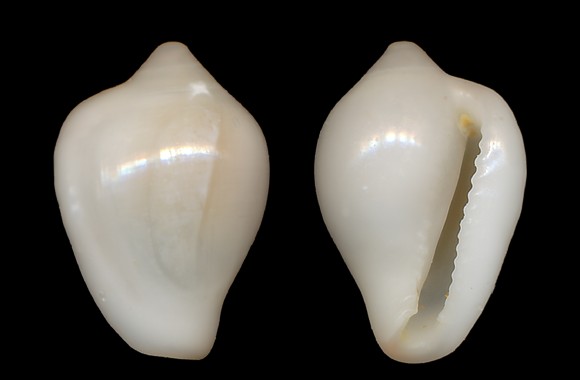
Norway (Trondheimsfjord in 2015, Sneli & Bakken, 2017) to Mediterranean. Rare in Ireland. Absent from the North Sea. Predator on ascidians. Lives on hard substrates in the infralittoral-circalittoral, with a known depth range of 20-100m.
Basionym: Cypraea voluta. Synonyms: fusiformis, laevis.
8-10m deep, Arenys de Mar, Catalunya, NE. Spain. 7mm.
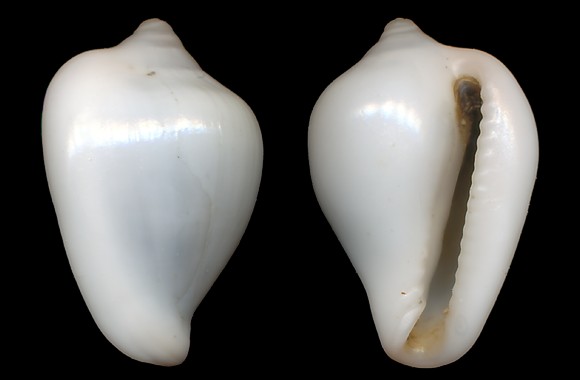
« Cypraea with a conoid, convoluted shell, of a pale greenish colour, with the outer lip white. Extreme volutions two, very small; aperture linear, terminated by a groove, or gutter; both lips denticulated, the inner one but faintly; Columella sub-plicated. It is a very strong thick shell, with a beautiful polish, and quite smooth; the outer lip much thickened, with sometimes along the under edge, and both angles of the aperture a slight tinge of pink. Length not quite half an inch. » – G. Montagu: Testacea Brittanica, London 1803, via BHL.
30m deep, Almería, Andalucia, S. Spain. 8mm.
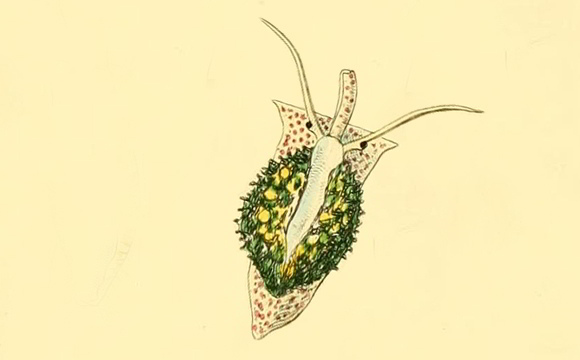
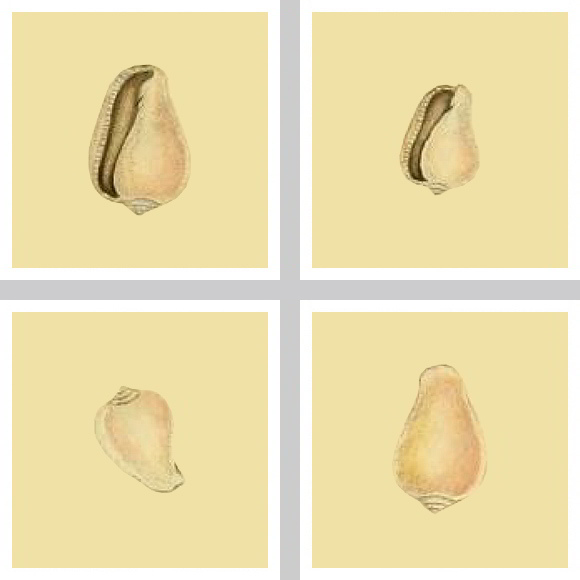
« As a British species, this extremely rare little shell was first noticed on the coast of Weymouth, being dredged up in deep water by some fishermen, and consigned to the cabinet of the late Dutchess of Portland. The specimens we have figured, are two of those originally in the possession of her Grace. »
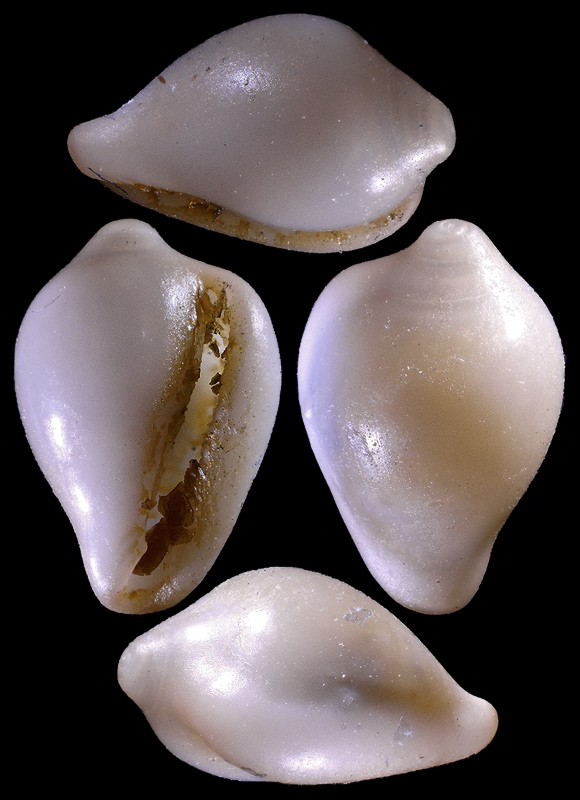
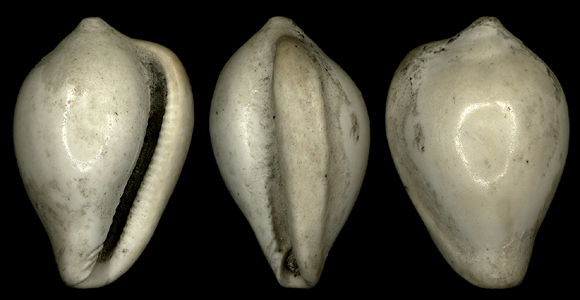
Original pictures provided by G. Doitteau for the MNHN Paris, France – (CC BY).